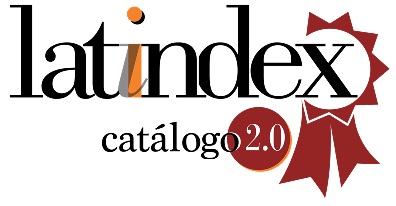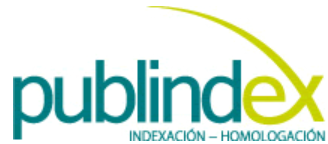Inovação, Burocracia e Corrupção: Uma Análise do Global Innovation Index
DOI:
https://doi.org/10.5281/zenodo.7054356Palabras clave:
Corrupção, Burocracia, Inovação, CorrelaçãoResumen
Este trabalho objetiva verificar se os fatores burocracia e corrupção instalados em um país impactam de forma significativa o seu nível de inovação. Para tanto são comparados 99 (noventa e nove) países que têm diversos níveis de burocracia os quais são combinados com países com elevados a reduzidos graus de corrupção e se verifica como estes países estão comportados dentro do ranking de inovação mundial mensurados pelo Global Innovation Index (GII-2020). Através da comparação estatística de médias dos níveis de inovação dos países da amostra se concluiu que a burocracia parece não afetar a inovação de um país de forma importante. A outra conclusão aqui defendida é que parece haver uma relação inversa significativa entre o grau de corrupção de um país e o seu nível de inovação. No caso brasileiro, onde estes dois fatores são demasiadamente elevados, este estudo tem importância a poder indicar qual destes dois fatores deve ser mitigado pelo poder público no objetivo de melhorar a performance do País no cenário mundial da inovação.
Descargas
Citas
Araújo, E. C. C., dos Santos Rodrigues, V. R., Monte-Mor, D. S., & Correia, R. D. (2018). Corrupção e valor de mercado: os efeitos da Operação Lava Jato sobre o mercado de ações no Brasil. Revista Catarinense Da Ciência Contábil, 17(51), 41-58. https://doi.org/10.16930/2237-7662/rccc.v17n51.2626.
Anokhin, S., & Schulze, W. S. (2009). Entrepreneurship, innovation, and corruption. Journal of business venturing, 24(5), 465-476. https://doi.org/10.1016/j.jbusvent.2008.06.001.
Barasa, L. (2018). Corruption, transaction costs, and innovation in Africa. African Journal of Science, Technology, Innovation and Development, 10(7), 811-821. https://doi.org/10.1080/20421338.2018.1519061
Bbaale, E., Okumu, I. M. (2021). Corruption and firm-level productivity: greasing or sanding effect? World Journal of Entepreneurship, Management and Sustainable Development, v. 14, n. 3, p. 222-241. https://doi.org/10.1108/WJEMSD10-2017-0067.
Boll, J. L. S. (2010). A corrupção governamental no Brasil: construção de indicadores e análise da sua incidência relativa nos estados brasileiros (Dissertação de mestrado). Pontifícia Universidade Católica do Paraná, Porto Alegre, RS, Brasil. https://repositorio.pucrs.br/dspace/bitstream/10923/2593/1/000423819-Texto%2BCompleto-0.pdf
Bugarin, M., & Meneguin, F. B. (2016). Incentivos à corrupção e à inação no serviço público: Uma análise de desenho de mecanismos. Estudos Econômicos (São Paulo), 46(1), 43-89. https://doi.org/10.1590/0101-416146142mbf.
Caiden, G., & Dwivedi, O. (2001). "Official Ethics and Corruption". In Where Corruption Lives, Caiden G.; G. Dwivedi; Jabbra J., (Eds.), Bloomfield: Kumarian Press. https://www.rienner.com/title/Where_Corruption_Lives.
Cohen, B. J. (1999). Fostering innovation in a large human services bureaucracy. Administration in Social Work, 23(2), 47-59. https://doi.org/10.1300/J147v23n02_04.
Corruption perceptions index. (2019). Transparência Internacional. Disponível em: https://www.transparency.org/en/cpi/2019/index/results.
Delavallade, C. (2006). Corruption and distribution of public spending in developing countries. Journal of economics and finance, 30(2), 222-239. https://doi.org/10.1007/BF02761488.
Dougherty, D., & Corse, S. M. (1995). When it comes to product innovation, what is so bad about bureaucracy?. The Journal of High Technology Management Research, 6(1), 55-76. https://doi.org/10.1016/1047-8310(95)90006-3.
Ellis, J., & Smith, J. (2019) Corruption and Corporate Innovation. Published online by Cambridge: Cambridge University Press.
Faría, H. J., Montesinos-Yufa, H. M., Morales, D. R., Aviles B, C. G., & Brito-Bigott, O. (2013). Does corruption cause encumbered business regulations? An IV approach. Applied Economics, 45(1), 65-83. https://doi.org/10.1080/00036846.2011.589814.
Gambetta, D. (1993). The Sicilian Mafia. Cambridge: Harvard University Press. https://www.cambridge.org/core/journals/modern-italy/article/abs/diego-gambetta-the-sicilian-mafia-the-business-of-private-protection-harvard-university-press-cambridge-mass-1993-335-pp-isbn-0674807413-2495-hbk/2185D7FD0353327929C4DAA13E7251FB.
Global Innovation Report- GII (2021). Disponível em https://www.globalinnovationindex.org/Home
Goedhuys, M., Mohnen, P., & Taha, T. (2016). Corruption, innovation and firm growth: firm-level evidence from Egypt and Tunisia. Eurasian Business Review, 6(3), 299-322. https://link.springer.com/article/10.1007/s40821-016-0062-4.
Gomide, A. D. Á., Machado, R. A., & Lins, R. D. S. (2022). The Variation of Bureaucratic Capacities in the Brazilian Federal Public Administration: an Analysis with Survey Data. Organizações & Sociedade, 29, 217-247. https://doi.org/10.1590/1984-92302022v29n0009EN.
Graaf, G. de. (2003). Tractable Morality. Customer Discourses of Bankers, Veterinarians and Charity Workers. Rotterdam: Erim. https://repub.eur.nl/pub/1038/.
Habiyaremye, A., & Raymond, W. (2013). Transnational corruption and innovation in transition economie. Disponível em: <https://www.merit.unu.edu/publications/wppdf/2013/wp2013-050.pdf>.
Habiyaremye, A., & Raymond, W. (2018). How do foreign firms’ corruption practices affect innovation performance in hosts countries? Industry-level evidence from transition economies. Innovation, 20(1), 18-41. https://doi.org/10.1080/14479338.2017.1367626.
Heywood, P. (1997). Political corruption: Problems and perspectives. Political studies, 45(3), 417-435. https://doi.org/10.1111/1467-9248.00089.
Hlavacek, J. D., & Thompson, V. A. (1973). Bureaucracy and new product innovation. Academy of Management Journal, 16(3), 361-372. https://doi.org/10.5465/254998.
Hoinaru, R., Buda, D., Borlea, S. N., Văidean, V. L., & Achim, M. V. (2020). The impact of corruption and shadow economy on the economic and sustainable development. Do they “sand the wheels” or “grease the wheels”?. Sustainability, 12(2), 481. https://doi.org/10.3390/su12020481.
Hulten, M. V. (2002). Corruptie, Onbekend, Onbemind, Alomtegenwoordig. Amsterdam: Boom.
IBRE (2020). https://blogdoibre.fgv.br/posts/como-o-brasil-se-situa-entre-maiores-economias-do-mundo-no-pos-covid
Kabadurmus, F. N. K., Sylwester, K. (2020). Corruption and innovation: the importance of competition. International Journal of Emerging Markets, 66(2), 1-23. https://doi.org/10.1108/IJOEM-08-2019-0658.
Klitgaard, R. (1988). Controlling Corruption. Berkeley: University of California Press. https://www.degruyter.com/document/doi/10.1525/9780520911185/html.
Krammer, S. M. (2019). Greasing the wheels of change: Bribery, institutions, and new product introductions in emerging markets. Journal of Management, 45(5), 1889-1926. https://doi.org/10.1177/0149206317736588.
Lakatos, E. M., & Marconi, M. A. (2002). Técnicas de Pesquisa: planejamento e execução de pesquisas, amostragens e técnicas de pesquisas, elaboração, análise e interpretação de dados. São Paulo: Atlas. https://pesquisa.bvsalud.org/portal/resource/pt/lil-616645.
Kurer, O. (1993). Clientelism, corruption, and the allocation of resources. Public Choice, 77(2), 259-273. https://doi.org/10.1007/BF01047869.
Lambsdorff, J. G. (2003). How corruption affects productivity. Kyklos, 56(4), 457-474. https://citeseerx.ist.psu.edu/viewdoc/download?doi=10.1.1.1075.6477&rep=rep1&type=pdf.
Leff, N. H. (1964). Economic Development Through Bureaucratic Corruption. American Behavioral Scientist, 8(3), 8–14. https://doi.org/10.1177/000276426400800303.
Leys, C. (1965). What is The Problem About Corruption? The Journal of Modern African Studies, 3(2), 215-230. doi:10.1017/S0022278X00023636.
Lima, L. V. A., Rufino, M. A., & Machado, M. R. (2019). Criando dificuldades para vender facilidades: corrupção, burocracia e crescimento corporativo no Mercosul. Revista De Contabilidade e Organizações, 13, 64-74. https://doi.org/10.11606/issn.1982-6486.rco.2019.158324.
Lachman, R. (1980). Toward Measurement of Entrepreneurial Tendencies. Management International Review, 20(2), 108–116. http://www.jstor.org/stable/40227523.
Luo, Y., & Junkunc, M. (2008). How private enterprises respond to government bureaucracy in emerging economies: the effects of entrepreneurial type and governance. Strategic Entrepreneurship Journal, 2(2), 133-153. https://doi.org/10.1002/sej.46.
Mahagaonkar, P. (2008). Corruption and innovation: a grease or sand relationship? Disponível em: https://www.econstor.eu/handle/10419/25713.
Malhotra, N. K. (2011) Pesquisa de marketing: uma orientação aplicada. São Paulo: Bookman. https://proflam.files.wordpress.com/2011/05/resumo-livro-malhotra.pdf.
Mauro, P. (1995). Corruption and Growth. The quarterly journal of economics. 110(3), 681-712. https://academic.oup.com/qje/article-abstract/110/3/681/1859244?login=false.
Melo, F. L. N. B. de, Sampaio, L. M. B. e Oliveira, R. L. de. (2022). Corrupção Burocrática e Empreendedorismo: Uma Análise Empírica dos Estados Brasileiros. Revista de Administração Contemporânea, 19(3), 374-397. https://doi.org/10.1590/1982-7849rac20151611.
Méon, P., & Weill , L. (2010). Is Corruption an Efficient Grease? World Development, 38(3), 244–259. https://doi.org/10.1016/j.worlddev.2009.06.004.
Martins, H. F. (1997). Burocracia e a revolução gerencial: a persistência da dicotomia entre política e administração. Escola Nacional de Administração Pública, 48(1), 42-78. https://repositorio.enap.gov.br/handle/1/1424.
Mendoza, R. U., Lim, R. A., & Lopez, A. O. (2015). Grease or sand in the wheels of commerce? Firm level evidence on corruption and SMEs. Journal of International Development, 27(4), 415-439. https://doi.org/10.1002/jid.3077.
Mescon, T. S., & Montanari, J. R. (1981). The personalities of independent and franchise entrepreneurs: an empirical analysis of concepts. Journal of Enterprise Management, 3(2), 149-159. https://journals.aom.org/doi/epdf/10.5465/ambpp.1981.4977192.
Myrdal, G. (1968). Asian drama: an enquiry into the poverty of nations. The Australian quarterly, v. 40, n. 4, p. 118- 21, dez. 1968. https://doi.org/10.2307/1238331.
Mungiu-Pippidi, A. (2015). Corruption: Good governance powers innovation. Nature News, 51(75), 295-310. https://www.nature.com/articles/518295a.
Nguyen, N. A., Doan, Q. H., Nguyen, N. M., & Tran-Nam, B. (2016). The impact of petty corruption on firm innovation in Vietnam. Crime, Law and Social Change, 65(4), 377-394. https://link.springer.com/article/10.1007/s10611-016-9610-1.
Olivieri, C. (2011). Os controles políticos sobre a burocracia. Revista de Administração Pública, 45(5), 1395-1424. https://doi.org/10.1590/S0034-76122011000500007.
Olsen, J. P. (2006). Maybe it is time to rediscover bureaucracy. Journal of public administration research and theory, 16(1), 1-24. https://doi.org/10.1093/jopart/mui027.
Paunov, C. (2016). Corruption's asymmetric impacts on firm innovation. Journal of Development Economics, 118, 216-231. https://doi.org/10.1016/j.jdeveco.2015.07.006.
Punch, M. (2000). Police corruption and its prevention. European Journal on Criminal Policy and Research, 8(3), 301-324. https://link.springer.com/article/10.1023/A:1008777013115.
Qian, Y., & Xu, C. (1998). Innovation and bureaucracy under soft and hard budget constraints. The Review of Economic Studies, 65(1), 151-164. https://doi.org/10.1111/1467-937X.00039.
Rocha, L. A., Khan, A. S., Lima, P. V. P. S., Poz, M. E. S. D., & Oliveira, F. P. S. D. (2019). O" efeito nefasto" da corrupção no Brasil:" quem paga mais?" Aplicações com o uso de regressões quantílicas com variáveis instrumentais. Nova Economia, 29, 277-305. https://doi.org/10.1590/0103-6351/3695.
Rodríguez-Pose, A., & Di Cataldo, M. (2015). Quality of government and innovative performance in the regions of Europe. Journal of Economic Geography, 15(4), 673-706. https://doi.org/10.1093/jeg/lbu023.
Rose-Ackerman, S. (1999). Corruption and Government: Causes, Consequences and Reform. Cambridge: Cambridge University Press.
Thompson, V.A. (1965). Bureaucracy and innovation Administrative. Science Quarterly, 10(1), 1-20. https://www.jstor.org/stable/2391646.
Fernández-Torres, Y., Gutiérrez-Fernández, M., & Ramajo-Hernandez, J. (2018). Business regulation and economic growth: The indirect effect of corruption in latin america and the caribbean. Journal of Developmental Entrepreneurship, 23(01), 185-203. https://doi.org/10.1142/S1084946718500036.
Veracierto, M. (2008). Corruption and innovation. Economic Perspectives, 32(1). https://ssrn.com/abstract=1096569.
Van Vu, H., Tran, T. Q., Van Nguyen, T., & Lim, S. (2018). Corruption, types of corruption and firm financial performance: New evidence from a transitional economy. Journal of Business Ethics, 148(4), 847-858. DOI: 10.1007/s10551-016-3016-y.
Weber, M. (1921). Economy and Society: An Outline of Interpretive Sociology. Berkeley: University of California Press.
Worldwide Bureaucracy Indicators (WWBI) | Data Catalog). (2019). Banco Mundial. Disponível em: https://datacatalog.worldbank.org/dataset/worldwide-bureaucracy-indicators.
Xu, G., & Yano, G. (2017). How does anti-corruption affect corporate innovation? Evidence from recent anti-corruption efforts in China. Journal of Comparative Economics, 45(3), 498-519. https://doi.org/10.1016/j.jce.2016.10.001.























